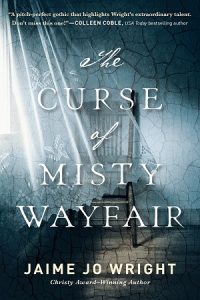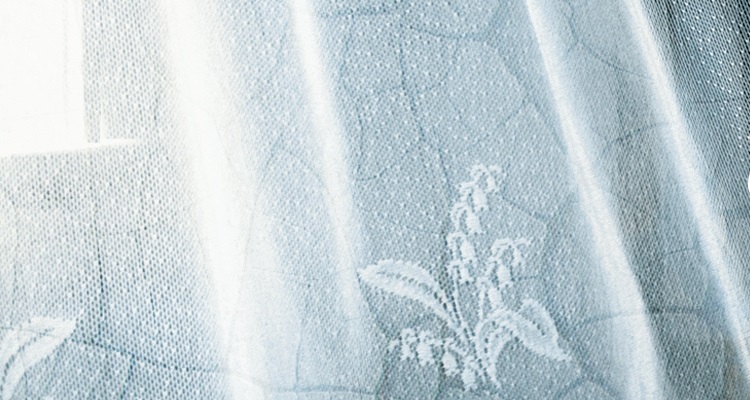The award-winning author explains the process behind writing novels that are both historical and contemporary fiction.
Jaime Jo Wright’s debut novel, The House on Foster Hill (Bethany House)—a mystery set in both the present and the past—won a 2018 Christy Awards in the suspense category. She returns with another split-time novel, The Curse of Misty Wayfair (Bethany House): As two women across time seek answers about their identities and heritage, they must overcome the threat of the mysterious curse that has them inextricably intertwined. In this interview, Jaime explains what draws her to write fiction set in dueling timelines, the importance of the novel’s time(s) and location, and the impact of winning a major award for her debut novel…
Jaime, your latest novel involves mental illness and questions of identity. What sparked the idea for this novel?
 Quite a few things, actually, not the least of which being the American culture where we are encouraged to “find ourselves,” administer “self-care,” and somehow find our worth in our introspection and personal strength.
Quite a few things, actually, not the least of which being the American culture where we are encouraged to “find ourselves,” administer “self-care,” and somehow find our worth in our introspection and personal strength.
I also have my own personal journey in that regard, and a well-layered personal story that includes not only finding who I am, but also struggling through elements of anxiety and depression that so often can be misunderstood, underestimated, or dismissed. So hidden in all of that, I found the story of Misty Wayfair and the characters surrounding her.
I also discovered the legacy and/or curse she left behind that helped those she touched, both in the past and in the present, struggle to understand where their true identity and worth can be found.
What can you tell us about Thea Reed? What made you want to build part of the novel around her?
Thea is a lost soul. I pictured her not unlike one of the Lost Boys in Peter Pan. That haunting feeling of not knowing who you really are, was a concept I wanted to investigate through Thea’s personal journey. Thea isn’t remarkable in any way, really.
When I wrote Thea, I realized in some ways, her personality was methodical, introspective, and even a bit timid. Yet, that nagging need to have a purpose, an identity, is so important to her, that it provides a drive to go places she’s not comfortable and to explore topics that frighten her. Thea is a character that, to me, shows quiet bravery in the midst of a lot of darkness.
What can you tell us about Heidi Lane? What about her made you want to build part of the novel around her as well?
Heidi is a bit of a rebel. She’s been influenced to be such by a stereotype applied to her by her family when she was young. She digs her heels in which it comes to conventional religious legalism, and yet inside, she’s really torn apart by having her personal faith and intentions misread.
I wanted to create Heidi to continue the theme of searching for one’s identity. Sometimes, we believe we know who we are but there is no real comfort in that. We’re still ostracized for one reason or another that makes us believe we a less than. Heidi is a story of a woman who struggles with mental illness and uncovering what purpose her Creator might possibly have for her.
What can you tell us about the time(s) and location(s) for this novel? How important are these details to how the stories play out?
 The time period of the early 1900s is one that I personally love. It’s a period where the Victorian era was closing, and a new, more modern way of existence was fast being born as industry and technology started progressing at a rapid rate. In that respect, this time period was very important to the story as it helps set the foundation for old ideas being challenged by new concepts—a theme that runs through the entire story.
The time period of the early 1900s is one that I personally love. It’s a period where the Victorian era was closing, and a new, more modern way of existence was fast being born as industry and technology started progressing at a rapid rate. In that respect, this time period was very important to the story as it helps set the foundation for old ideas being challenged by new concepts—a theme that runs through the entire story.
As for the location, I set The Curse of Misty Wayfair in the Northwoods of Wisconsin because, frankly, it’s one of my favorite places in the world. It still has an aura of being untouched by the hustle of modern day, and its backdrop of forests and rivers create the perfect setting for the legend of an old ghost.
All three of your novels involve dual storylines that are set a century apart. What draws you to this format?
I’ve always been intrigued by the history behind a “thing.” Whether it’s an old lace doily I find at a thrift store, or an abandoned house, or a vintage dress. They may be inanimate objects and yet they belonged to someone.
If they could tell us, what stories would be released from their silent vigil? What lives in the past may inadvertently intersect with ours today, and how do their choices ripple into the future?
Want to know the challenge of writing a novel about women in two centuries? Click through…


